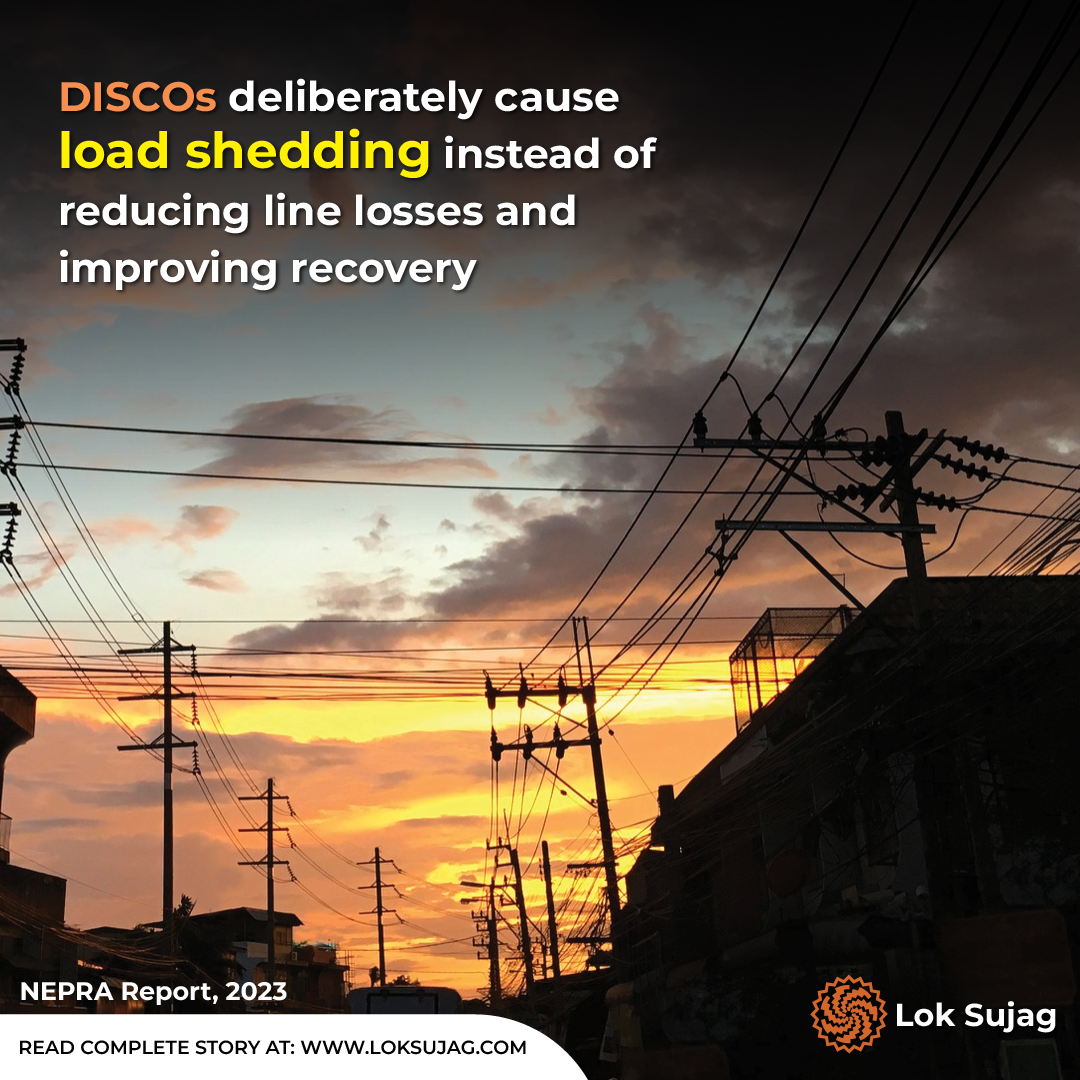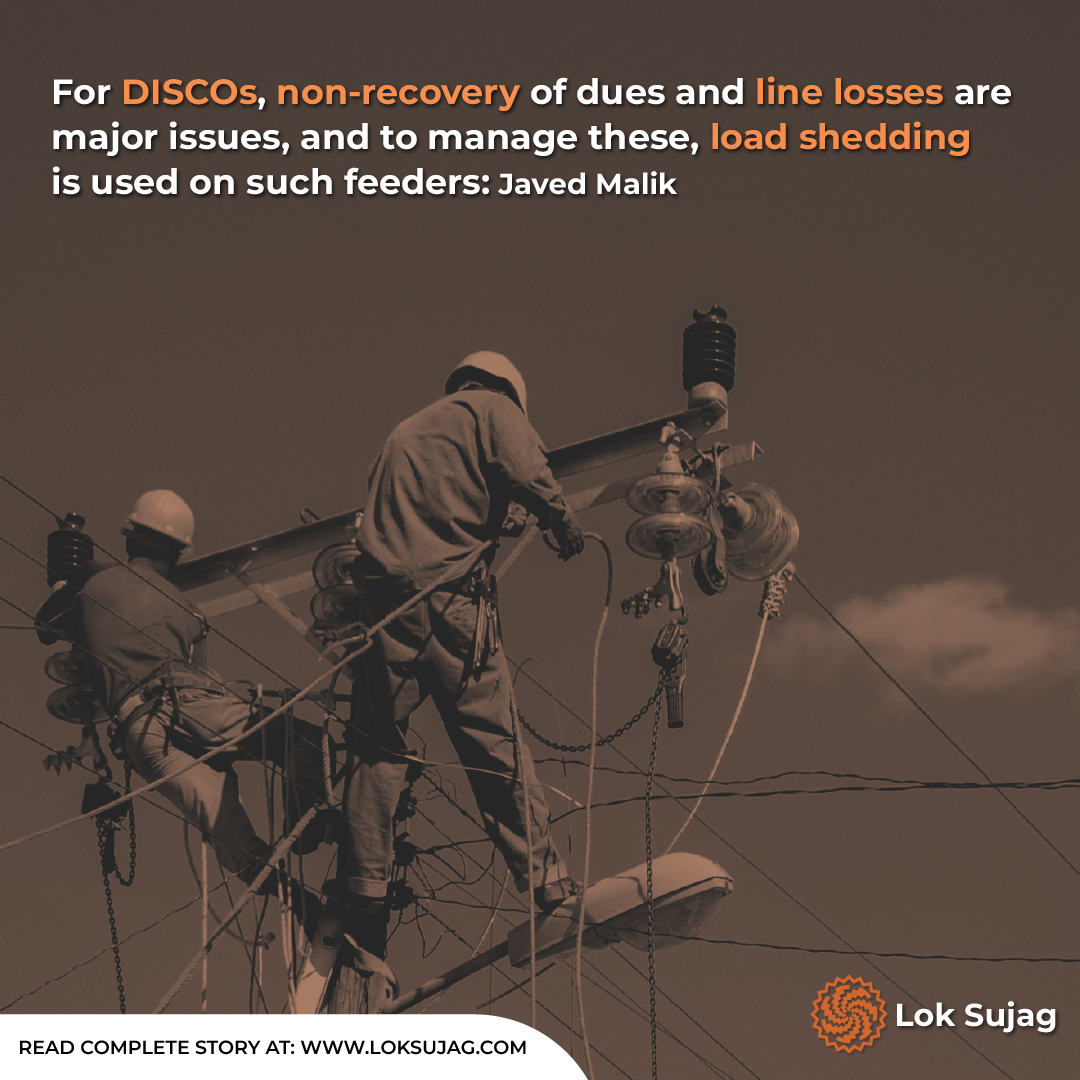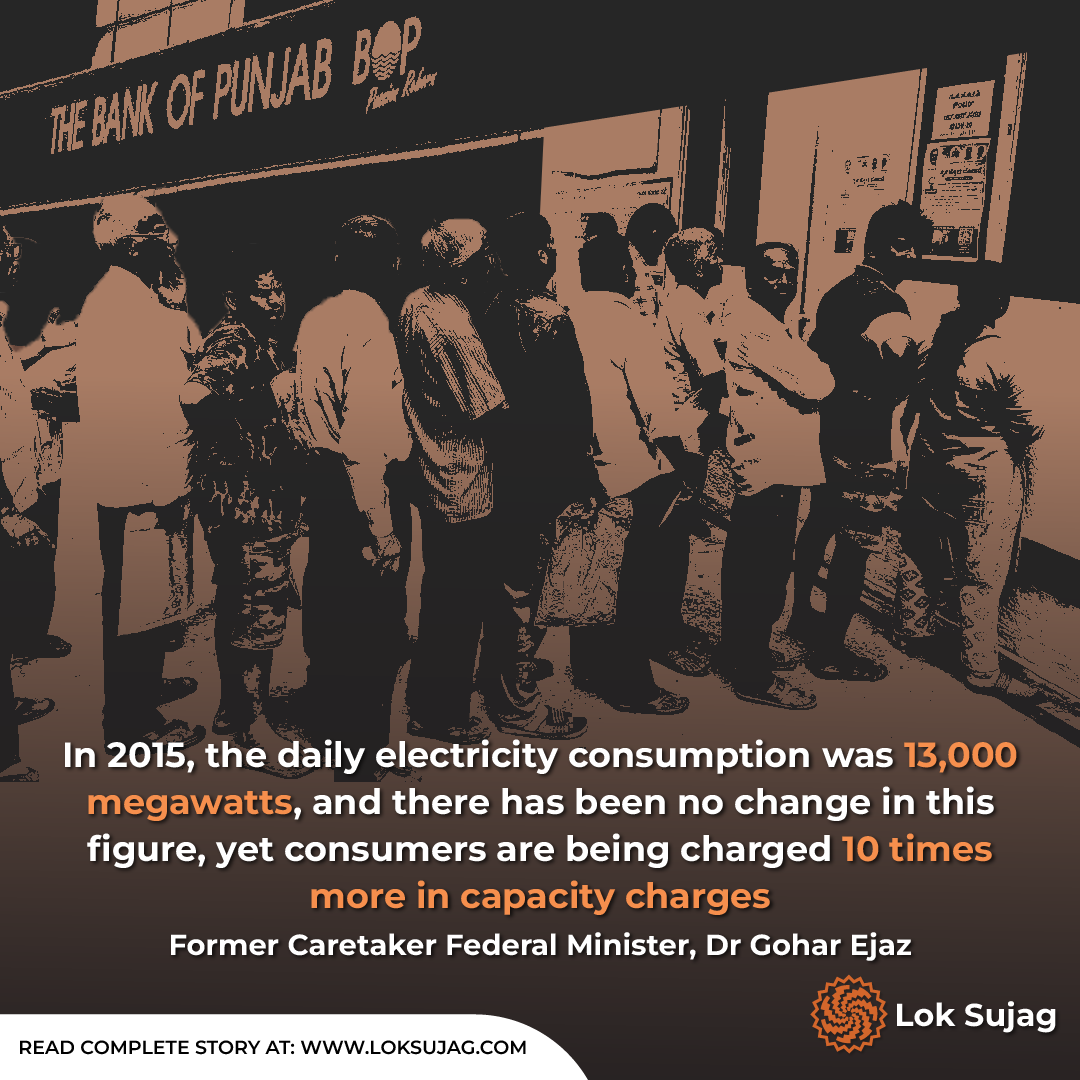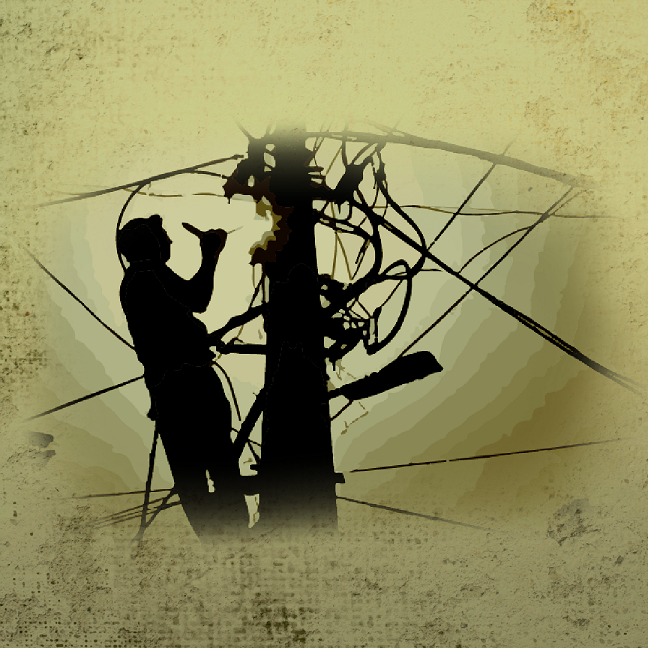Rana Abdul Rehman, a resident of a border village, Dayal, 25km from Lahore, got so fed up with the power outages that he sent his kids to their maternal relatives in the city.
He says his village faces 10 to 12 hours of loadshedding daily. In case there is electricity, the voltage is often low. Moreover, the transformer also fails after every two or three months in his area.
He says electricity theft is rampant in almost all villages in the border area. However, many consumers, including him, pay bills regularly and consider electricity theft a crime.
“I have two children aged five and three for whom I have installed a UPS at my home to keep the fan running. However, UPS battery also runs out during long hours of loadshedding.”
According to Rehman, people in his area have several cattle heads. Whenever electricity is restored after an hours-long outage, the cattle farmers run the electric choppers and water pumps simultaneously due to which the transformer overheats under load and stops working.
Besides the border areas, the Walled City of Lahore also faces four to six hours of power outages. However, there are such areas too where there is no power outage.

On the contrary, Lesco (Lahore Electric Supply Company) officials explain that the electricity production in the country exceeds the current demand. Only those areas are facing loadshedding that have more line losses and electricity theft.
“Sometimes technical malfunctions and repairs also lead to power outages. In this situation, feeders’ outage schedule is provided to the respective grids and the power supply is suspended accordingly,” they say.
The performance report of distribution companies (DISCOs) released last year, i.e. 2023, by Nepra (National Electric Power Regulatory Authority) reveals that instead of reducing the line losses and improving recovery, DISCOs intentionally carry out loadshedding. In 2021-22, various DISCOs did two to 10 hours of loadshedding.
“Iesco (Islamabad Electric Supply Company), Gepco (Gujranwala Electric Supply Company) and Fesco (Faisalabad Electric Supply Company) carried out two to three hours outages daily, Lesco (Lahore Electric Supply Company) three to four hours, Mepco (Multan Electric Supply Company) four to five, Kesco (Kanpur Electric Supply Company), Sepco (Sukkur Electric Supply Company) and Hesco (Hyderabad Electric Supply Company) 10 hours long outages while K-Electric did up to six hours daily loadshedding.”
The report also states that the loadshedding exceeded the DISCOs’ mentioned figures which violated Nepra rules. Consequently, action was also taken against DISCOs.

Official statistics prove that the country is facing outages despite generating power more than its total demand.
According to Pakistan Economic Survey 2024, the country’s power production capacity (installed capacity) is 42,131MW. The total electricity production in the country is more than 92,000GWh from July 2023 to March 2024, while the demand was only around 68,500 GWh.
Nepra has allowed DISCOs to cut the power as per Aggregate Technical and Commercial (AT&C) losses. This policy has placed feeders with 10pc losses in the A category with no loadshedding. Similarly, the feeders with losses ranging from 10.1 to 20pc are preferred to avoid loadshedding.
“Loadshedding is scheduled for two hours on feeders with 20.1pc to 30pclosses, four hours on the feeders with 30.1pc to 40pc losses, eight hours on the feeders with 40.1pc to 60pc losses, 12 hours on the feeders with 60.1pc to 80pc losses and more. Up to 16 hours of outages are permitted for these feeders. However, DISCOs often exceed this limit.”
The federal energy minister reveals the annual loss of Rs600bn due to electricity theft. Currently, the system has excess electricity; however, supplying electricity following the demand will cause a loss of Rs2bn to Rs2.5bn.
Certain feeders use coils. Supplying them with electricity will increase the load on the billing customers.

Lately, Iesco has initiated installing AMI (advanced metering infrastructure) meters in its areas. Dr Muhammad Amjad, former chief of Iesco, claimed that AMI meters would eradicate power theft, provide accurate readings and diminish line losses. However, the citizens concerned at loadshedding are also upset with the heavy electricity bills that have made their lives miserable.
Former Caretaker Federal Minister Dr Gohar Ejaz takes a dig on the government’s policies regarding electricity.
“There is no change in the daily electricity consumption, which has been 13,000MW since 2015. However, the consumers are paying 10 times more capacity charges.”
According to his social media claims, despite the installed capacity being 43,400MW, consumption remains stagnant, yet the IPPs (independent power producers) are being paid Rs2tr for partial or zero electricity production. How can the country sustain itself with such IPP agreements?
Energy sector expert Syed Akhtar Ali, who has also been a member of the Planning Commission (Energy), explains that under the China-Pakistan Economic Corridor’s new project, the country’s power generation capacity has significantly increased and it is rising further.
“When electricity is used, its cost is paid by the consumers. However, if the production is not consumed, the government covers its cost, this is known as capacity charges. Hence, the revolving debt of the power sector in Pakistan has reached Rs2tr.”
Also Read

Why are consumers paying for line losses and electricity theft?
He adds that more plants are being installed for electricity production using coal, gas and nuclear fuel. They will also have to pay capacity charges. There will be a further reduction in power consumption due to solar energy, which will increase the revolving credit.
According to an economic analyst Jawad Malik, the non-recovery of dues and line losses are major problems for DISCOs, which is overcome by loadshedding on such feeders.
“However, due to the lack of progress in the country’s power distribution and transmission system, electricity is wasted during its supply to the consumer from the grid. As a result, the consumer is left to bear its consequences.”
He says that according to an estimate, consumers are bearing the burden of up to 18pc of line losses. Simultaneously, the Power Division has lately implemented further hikes in electricity tariffs and fixed charges for domestic consumers.
Published on 26 Jul 2024




















